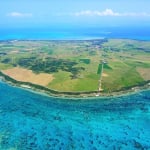Name: Samarkand – Crossroad of Cultures
Location: Samarkand, Uzbekistan
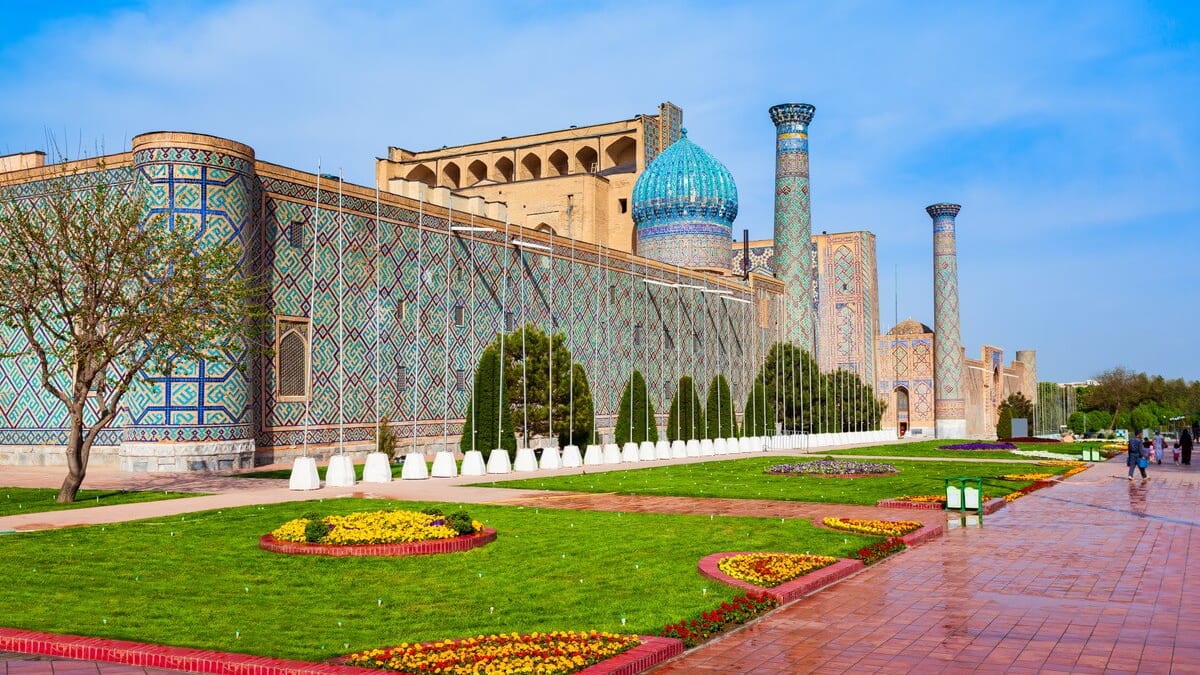
Uzbekistan’s 6 World Heritage Sites | Welcome to a Fascinating World of Blue!
Uzbekistan, a country at the heart of Central Asia, flourished as a crucial hub along the Silk Road. The nation is home to numerous ancient cities where history still lives on, with well-preserved cityscapes showcasing its rich cultural heritage. Many of these historic sites have been designated as UNESCO World Heritage Sites, attracting visitors from all over the world.
In this article, we will introduce all six UNESCO World Heritage Sites in Uzbekistan, each offering a glimpse into the country's glorious past and mesmerizing architectural wonders.
table of contents
[x] close
Uzbekistan’s 6 World Heritage Sites | Welcome to a Fascinating World of Blue!
1. Samarkand – Crossroad of Cultures
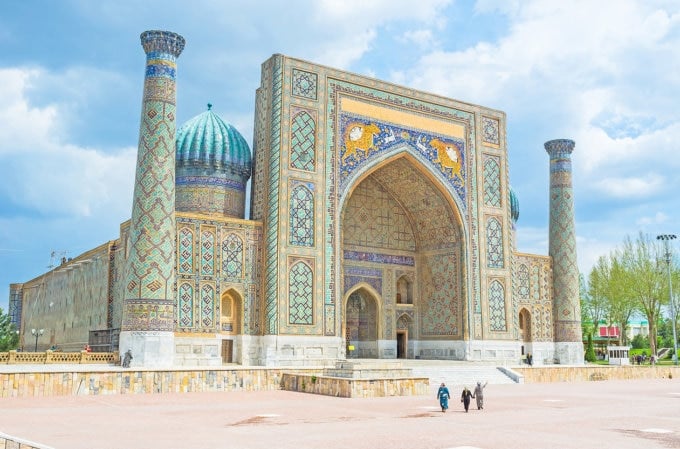
Samarkand, often called the "Blue City," is a historic city located in eastern Uzbekistan. As a key hub of the Silk Road, it flourished for centuries and became the capital of the Timurid Empire in the 14th century.
Samarkand is known for its fusion of Eastern and Western cultures, reflected in its stunning architecture adorned with vibrant blue tiles, a color often referred to as "Samarkand Blue." These breathtaking structures have made the city a UNESCO World Heritage Site since 2001, attracting visitors from all over the world.
At the heart of Samarkand is Registan Square, surrounded by three magnificent madrasahs (Islamic schools). The closer you get to these structures, the more you will be captivated by the intricate blue decorations. Samarkand’s breathtaking beauty makes it an unforgettable destination—a true gem of Uzbekistan that every traveler should visit.
2. Itchan Kala
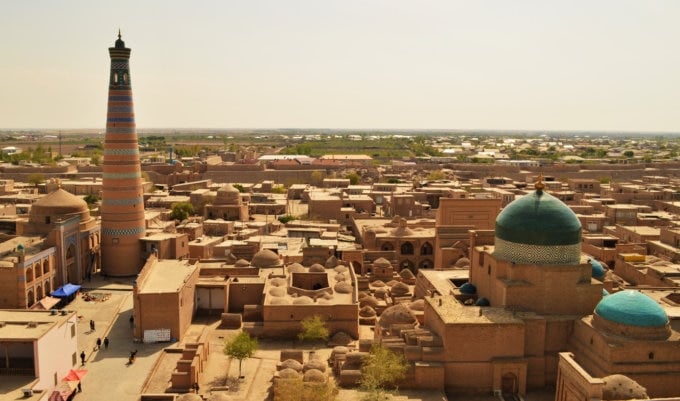
Located in Khiva, in northwestern Uzbekistan, Itchan Kala is a UNESCO World Heritage-listed old city, known for its well-preserved medieval architecture.
In the 17th century, Khiva was an Islamic holy city protected by double fortification walls—an outer wall and an inner wall. Itchan Kala, meaning "Inner Fortress," refers to the old city within the inner walls. Among all the fortified cities in Central and Western Asia, Itchan Kala stands out as the best-preserved, making it a truly unique historical treasure. It was recognized as Uzbekistan’s first UNESCO World Heritage Site in 1990.
Often called "The Pearl of Central Asia," Itchan Kala is an enchanting city filled with historical Islamic architecture. The main landmark here is the Kalta Minor Minaret, located near the West Gate. Although left unfinished due to the death of the ruler, its turquoise mosaic tiles make it an iconic symbol of Khiva.
Name: Itchan Kala
Location: Itchan Kala, Khiva, Uzbekistan
3. Historic Centre of Bukhara
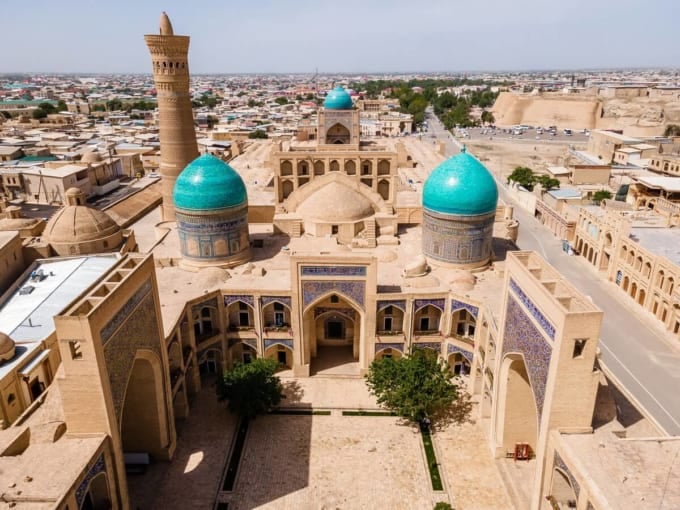
Bukhara, the capital of Bukhara Region, is one of Uzbekistan’s most historically significant cities, having been a major hub of the Silk Road for over 2,000 years. Throughout history, Bukhara served as an Islamic cultural center, attracting scholars, religious leaders, and merchants from across the world.
The city is divided into the old town and the new town, with the old town being inscribed as a UNESCO World Heritage Site in 1993.
Although Genghis Khan destroyed much of Bukhara in 1220, the city experienced a remarkable revival in the 16th century, preserving many architectural treasures. Among them, the Ismail Samani Mausoleum, which houses the royal tombs of the Samanid Dynasty, is considered the oldest surviving Islamic architectural masterpiece in Central Asia, drawing great interest from archaeologists and historians.
Other must-visit landmarks in Bukhara include the Kalon Minaret, an iconic symbol of the city, and the Ark of Bukhara, a historic fortress that served as the residence of Bukhara’s rulers. With one of the most well-preserved medieval cityscapes in Central Asia, Bukhara stands as one of Uzbekistan’s most prized UNESCO World Heritage Sites.
Name: Historic Centre of Bukhara
Location: M. Ashrafi Str., Buxoro, Bukhara, Uzbekistan
4. Historic Centre of Shakhrisabz
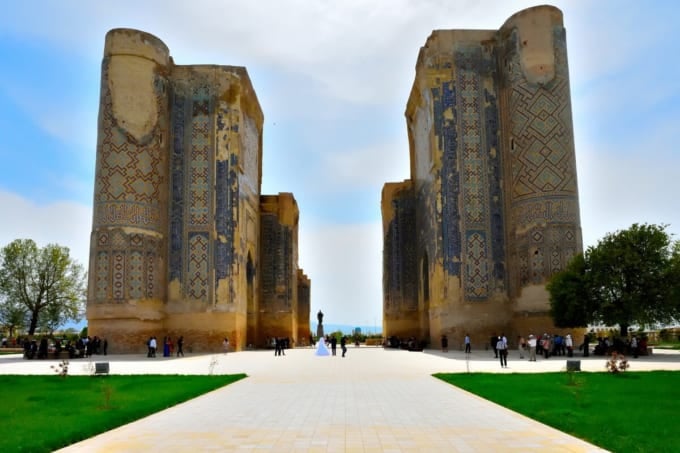
Shakhrisabz, located in Qashqadaryo Region, is famous as the birthplace of Timur, one of Uzbekistan’s greatest historical figures. During the 15th century, under the Timurid Empire, the city flourished as the second most important urban center after Samarkand, with grand and magnificent architectural structures. Although much of the city was destroyed in the late 16th century by Abdul Khan, its remaining structures were recognized as a UNESCO World Heritage Site in 2000.
One of the key attractions in Shakhrisabz is the Aq-Saray Palace, which was once the largest architectural structure of the Timurid Empire. Though much of the palace has collapsed, its massive entrance gate still stands, offering visitors a glimpse of its former grandeur. Compared to other UNESCO-listed cities in Uzbekistan, Shakhrisabz has a more tranquil and serene atmosphere, making it a unique and charming destination.
Name: Historic Centre of Shakhrisabz
Location: 47 Horezmskaya Street, Shahrisabz 700047, Uzbekistan
5. Western Tien-Shan
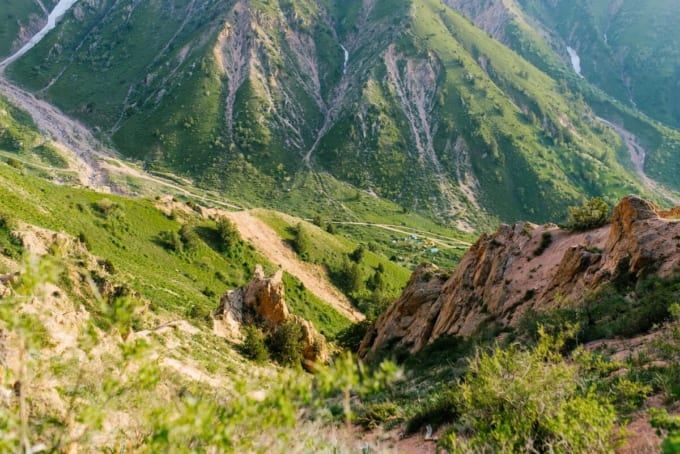
Uzbekistan’s UNESCO sites are not only limited to historic cities along the Silk Road. In 2016, the country’s first natural World Heritage Site was inscribed—Western Tien-Shan.
The Western Tien-Shan is part of the Tien-Shan Mountain Range, one of the largest mountain systems in the world, extending across international borders. It is recognized as a transnational UNESCO World Heritage Site shared by Uzbekistan, Kazakhstan, and Kyrgyzstan.
Spanning over 2,500 km, the Western Tien-Shan includes seven protected nature reserves and national parks. The Chatkal State Biosphere Reserve, located in Tashkent Region, Uzbekistan, is a key part of this heritage site. In spring, the reserve is filled with blooming tulips, poppies, and irises, while in winter, it transforms into a skiing destination.
Name: Western Tien-Shan
Location: Uzbekistan, Kazakhstan, Kyrgyzstan
Official Website: https://whc.unesco.org/en/list/1490/
6. Silk Roads: Zarafshan-Karakum Corridor
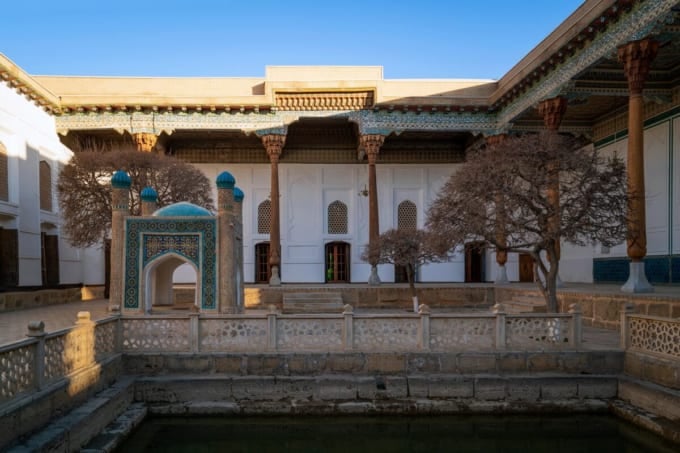
One of Uzbekistan’s most recent UNESCO additions is the Silk Roads: Zarafshan-Karakum Corridor, which was inscribed in 2023 as a cross-border World Heritage Site shared by Uzbekistan, Tajikistan, and Turkmenistan. This corridor spans approximately 866 km, preserving 34 key historical sites along this ancient Silk Road trade route in Central Asia.
Among these, Uzbekistan contributes 16 sites, including Baha-ud-Din Naqshband Mausoleum and several caravanserais, which played a significant role in Silk Road trade and cultural exchanges.
Name: Silk Roads: Zarafshan-Karakum Corridor
Location: Uzbekistan, Tajikistan, Turkmenistan
Official Website: https://whc.unesco.org/en/list/1675/
◎ Summary: Uzbekistan’s 6 UNESCO World Heritage Sites
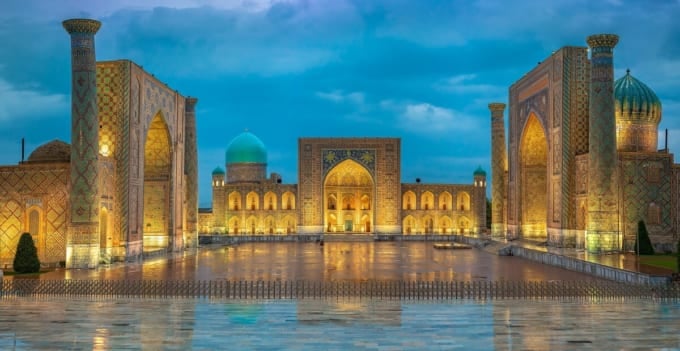
Among Uzbekistan’s six UNESCO-listed sites, five are cultural heritage sites, preserving stunning Islamic architecture that showcases the beauty of blue-tiled domes and intricate designs. Travelers along the Silk Road once found solace and awe in these magnificent blue cities, much like modern visitors do today.
If you’re seeking a destination rich in history, culture, and breathtaking scenery, Uzbekistan is a place you must visit!
RELATED ARTICLES
REGIONS
CATEGORIES
FEATURED ON Guide
-
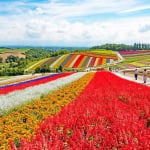
Where will you go for the summer vacation? Introducing recommended spots for domestic travel
-

Kaizu City’s Recommended 7 Tourist Spots. Enjoy the Culture and History Nurtured by Wajū!
-
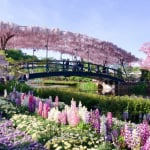
What Makes Ashikaga Flower Park So Special? A Treasure Trove of Photo-Worthy Spots!
-
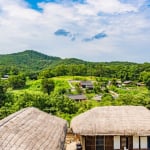
600 Years of Radiant Tradition: Korea’s Historic Villages of Hahoe and Yangdong
-

Two-Colored Seas and a Pink Beach! 4 Must-Visit Spots in North Eleuthera
MOST POPULAR ON Guide
-
 1
1South Korea: Dazzling Scenery, Rich Culture and Fascinating History
-
 2
2The Top 5 Places to Eat Mango Shaved Ice in Taipei
-
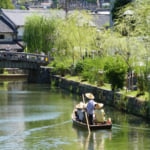 3
3The Most Picturesque Historic Towns and Traditional Villages in Japan
-
 4
4The Top 5 Molecular Gastronomy Restaurants You Need to Visit Around the World
-
 5
5Seoul: The Capital City of South Korea where History and Modernization Meet





